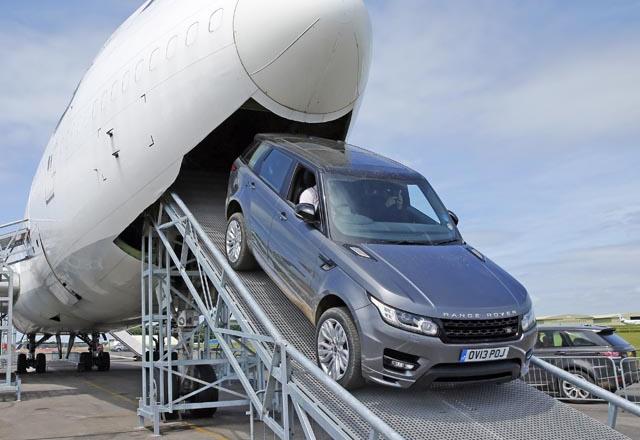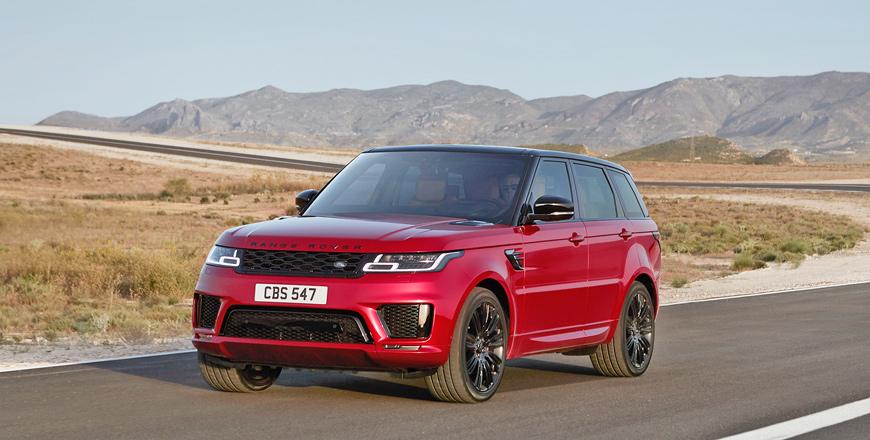Going above and beyond the usual length and breadth of a new model launch test drive, Land Rover aptly and convincingly proved that off-road ability, sporty on-road handling and high levels of luxury and refinement need not be mutually exclusive attributes as conventional wisdom would have. When first launched in 2005, the Range Rover Sport’s very name seemed an oxymoron, but clever engineering, commitment to off-road heritage and a determination to break the mould, ensured success. Unlike “sports” SUVs that preceded it, the Range Rover Sport doesn’t compromise off-road credentials, while the recently launched second generation only serves to further bend the rules of what is possible.
Built on a shorter version of the aluminium unibody frame underpinning the new full-size luxury Range Rover, the smaller Sport is up to 420kg lighter — depending on model — and 25 per cent stiffer than its predecessor, and reaps handling, refinement, performance and efficiency dividends. Utilising advanced and thoroughly engineered suspension and drive-train hardware and software, the Sport tackled extensive and exhaustive test drive routes with flying colours. Devouring narrow, fast, sprawling and imperfect British B-roads with poise, the Sport also never missed a beat through steep, narrow and viscously muddy trails, rivers and negotiated the tight confines of an off-road course built into the gutted bowels of a Boeing 747 jet.
Quick and consistent
Offered with a choice of two supercharged petrol engines, the new three-litre V6 is based on the familiar and devastatingly powerful range-topping five-litre V8. Taking advantage of the Sport’s extensive weight loss, the V6 delivers well in terms of efficiency and performance. Developing 335BHP at 6,500rpm and 332lb/ft throughout 3,500-5,000rpm, the Sports 3.0 V6 briskly sprints to 100km/h in 7.2-seconds and onto 209km/h. More impressive however are its characteristics. With a mechanically driven Roots’ type supercharger, the Sport V6 launches with immediacy and responsiveness from standstill, and pulls consistently and seamlessly hard through a muscular mid-range and all the way to its high rev limit.
Flexible and versatile in the mid-range, the Sport V6 hauls its 2144kg mass confidently, whether overtaking from cruising speed, bearing down at high speed or plowing through gritty off-road conditions. To make the most of its power and torque in terms of performance, efficiency and refinement by distributing them over a wide range of ratios, the Sport uses a silky smooth and quick shifting eight-speed automatic gearbox with manual shift settings. Reassuringly stable and refined inside at high speed and through crosswinds at Cotswold Airport’s runway, the Sport features aerodynamic underfloor paneling, while its 360mm ventilated disc brakes proved effective and well-resistant to fade during aggressive 0-160-0km/h testing.
Composed cornering
Riding on sporty front double wishbone and rear multi-link air suspension, the Sport is smooth and sophisticated on-road, while optional adaptive dampers and anti-roll bars stiffen through corners to suppress weight transfer and deliver taut body control corners, and alternatively become supple on straights for improved comfort. Driven through a permanent four-wheel-drive system with a 58 per cent rear bias for sportier rear-drive like handling, the Sport also features standard centre and optional rear axle Torsen differentials — along with selective brake-base torque vectoring — which ensures vice-like traction and grip. As power is intuitively re-apportioned, the Sport claws its way out of fast or low traction corners with stability and composure.
With a lighter front-end, the Sport V6 version is the sweeter handling Sport version, with a crisp, tidy and eager turn-in and precise and quick steering. Though narrow country lanes and snaking Welsh Brecon Beacons hill climbs, the Sport was agile, controlled and fluid, with excellent vertical rebound control, while upright seating offered good front and side visibility to accurately place it on road. Offered with alloy wheels up to 22-inches (56cm) to fill its muscular wheel-arches, the tested 21-inch (53cm) wheels were firm but smoothly absorbed most lumps, bumps and cracks. For rougher Jordanian roads, one would however recommend the entry-level 19-inch (48cm) wheels and their more forgiving tyres.
Ready for the rough
Tearing through narrow, winding, gravelly and rugged dirt routes at the Sennybridge military training grounds, the Sport was agile and sure-footed with slightly biased under-steer handling characteristics at its grip limit, to make it more intuitive for less experienced drivers. Whether tackling narrow fast roads or treacherous off-road conditions, the Sport’s engineering solutions work to its advantage, with raising air suspension allowing 278mm ground clearance and 850mm water wading depth through rivers. Optional active anti-roll bars are similarly clever, tightening for cornering finesse and softening for straight-line comfort, and disengaging to provide superb 546mm axle articulation and 260mm front and 272mm rear wheel travel off-road.
With extensive off-road hardware and software, the Sport proved to be thoroughly capable, as tested through narrow and deep thick viscous mud trails, steep inclines and rivers at grueling off-road courses at Eastnor and Batsford. In addition to raising ride height and superb wheel travel and axle articulation keeping wheels in contact with the ground, the Sport’s locking differentials keep wheels turning in sync even if one or more wheels are slipping or raised off the ground. Complementing its off-road mechanicals, the automatic Terrain Response off-road driver assist system monitors conditions and alters throttle, braking and differential settings. Impressively, the Sport did all this on road-biased 21-inch alloy wheels!
Class and kit
With more rakish roofline and aerodynamics than its predecessor, the Sport is however still easily identifiable as Range Rover and is more upright than rivals. Though based on the full-size Range Rover under the skin and sharing similar proportions, the Sport’s styling details are also reminiscent of its smaller Evoque sister. More overt and aggressive than the full size Range Rover, the Sport focuses on creating a sense of muscular presence and dynamic tension.
Sophisticated, tasteful and refined inside, the Sport’s cabin has an upright driving position and its classy interior design is complemented by high quality fit and materials, including real metals, woods, double stitched leathers, soft textures.
Spacious and airy inside, the Sport now features an optional third row of seats, while extensive cabin kit includes a 23-speaker Meridian sound system, 12.3-inch (31cm) infotainment screen, USB and Bluetooth connectivity, voice command, pre-timed four-zone climate control, keyless entry and engine start and WiFi Hotspot Internet connectivity. Extensive safety and driver assist kit also includes stability and traction control, adaptive cruise control, trailer stability control, electronic brake-force distribution and hill descent and start controls, traffic sign recognition, lane departure and blind spot monitoring and Isofix child seat anchors, while optional systems include a queue assist that brings the Sport to a full stop in traffic and parking assistance functions.
SPECIFICATIONS
Engine: 3-litre, aluminum block/head, super-charged, V6-cylinders
Bore x stroke: 84.5 x 89mm
Compression ratio: 10.5:1
Valve-train: 24-valve, DOHC, continuously variable cam timing
Gearbox: 8-speed automatic
Drive-line: 4WD, low ratio transfer case, center and optional rear differential lock
Default torque split, F/R: 42% / 58%
Power, BHP (PS) [kW]: 335 (340) [250] @ 6,500rpm
Torque, lb/ft (Nm): 332 (450) @ 3,500-5,000rpm
0-100 km/h: 7.2-seconds
Top speed: 209km/h
Combined CO2 emissions: 249g/km
Fuel capacity: 105-litres
Length: 4,850mm
Width: 1,983mm
Height: 1,780mm
Wheelbase: 2,923mm
Aerodynamic drag co-efficient: 0.37
Minimum weight: 2,144kg
Wading depth: 850mm
Ground clearance: 278mm
Approach angle, off-road mode: 33°
Departure angle, off-road mode: 31°
Ramp angle, off-road mode: 27°
Wheel travel, F/R: 260 / 272mm
Axle articulation: 546mm
Suspension, F: SLA, air springs, adaptive dampers & anti-roll bar
Suspension, R: Integral-link, air springs, adaptive dampers & anti-roll bar
Steering: Electric assistance, rack & pinion
Lock-to-lock: 3-turns
Turning radius: 12.6-metres
Brakes, F/R: Ventilated discs, 360 / 350mm
Wheels: 21-inch alloys



















